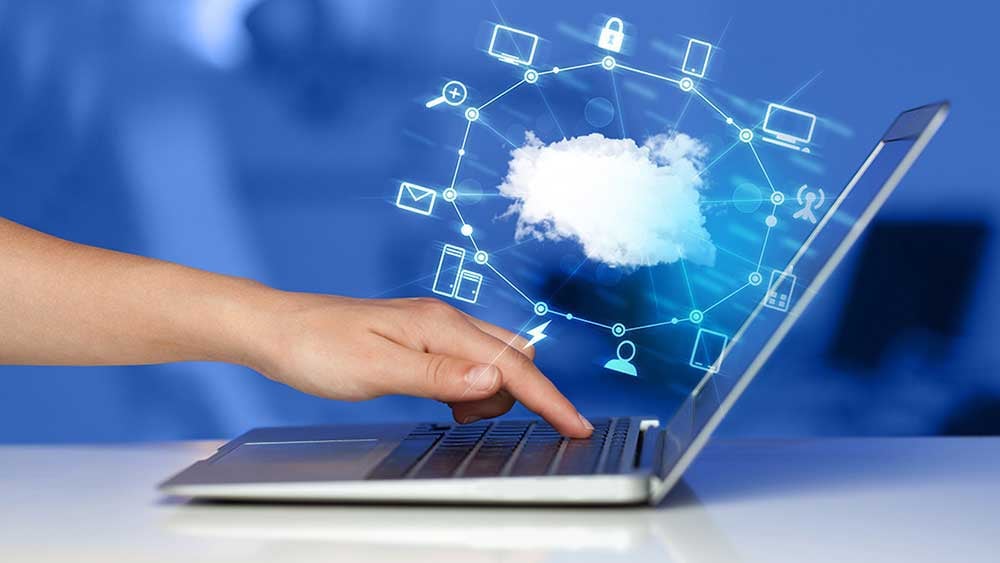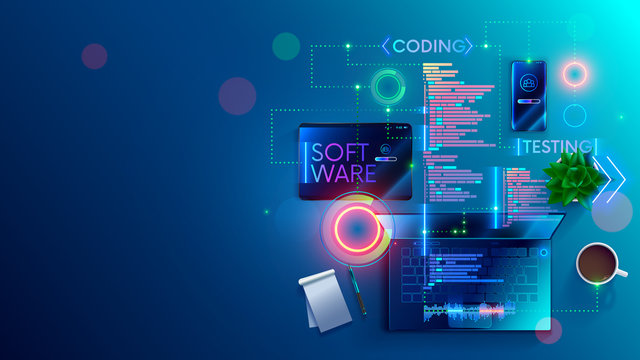Creating groundbreaking software requires significant investment in time, resources, and innovation. However, without proper intellectual property protection, your hard work could be vulnerable to theft, unauthorized copying, or misuse by competitors. Software intellectual property encompasses the legal rights that protect the creative and innovative aspects of software development, including source code, algorithms, user interfaces, and proprietary methodologies.
Understanding and implementing robust IP protection strategies is crucial for software developers, startups, and established companies alike. Proper protection not only safeguards your competitive advantage but also enhances your company’s valuation, attracts investors, and provides legal recourse against infringement. This comprehensive guide will walk you through the essential types of software IP protection and provide actionable strategies to secure your digital assets.
Types of Software Intellectual Property

Copyright Protection
Copyright automatically protects original software code from the moment it’s created and fixed in a tangible medium. Copyright law provides automatic protection for software and related creative works, ensuring legal rights for creators. A copyrighted software program is protected under copyright law, granting the owner control over its use and distribution. Copyright protects the specific expression of ideas in software, such as code and user interface elements, rather than the underlying ideas themselves. This protection covers source code, object code, documentation, and user interfaces. Unlike other forms of IP protection, copyright doesn’t require registration, though formal registration provides additional legal benefits.
Copyright protection typically lasts for the life of the author plus 70 years, or 95 years from first publication for works made for hire. Software copyright grants the owner exclusive rights to copy, modify, and distribute copies of the software. Copyright protected software includes both source and object code, as well as user interface elements. This extensive timeframe makes copyright particularly valuable for software companies looking to maintain long-term protection over their codebase. Copyright law also grants the right to create derivative works based on the original software.
Software Patents
Patents protect novel, non-obvious software inventions and processes. Patent protection is designed to safeguard the functional and technical features of software, distinguishing it from other forms of intellectual property. A software patent specifically protects software inventions, typically covering functional aspects rather than the code itself. While controversial in the software industry, patents can provide powerful protection for innovative algorithms, methods, and technical solutions.
The patent application process is complex and expensive, often taking 2-3 years for approval. Patent rights grant exclusive control over new and non-obvious software inventions, enabling patent holders to monetize their innovations and protect against infringement. However, patents grant exclusive rights for a limited period of 20 years from the filing date, allowing patent holders to prevent others from making, using, or selling their patented invention. Patent applications for software are filed with the appropriate patent or trademark office, such as the United States Patent and Trademark Office (USPTO), which examines and grants protection.
Trade Secrets
Trade secrets protect confidential information that provides a competitive advantage, such as proprietary algorithms, customer databases, or development methodologies. Trade secrets derive their legal protection from the economic value they provide by not being publicly known. Unlike patents, trade secrets don’t require disclosure and can last indefinitely if properly maintained, as long as the owner takes reasonable steps to keep the information confidential.
Common software trade secrets include compilation techniques, optimization methods, security protocols, and business logic. The key requirement is that the information must be kept confidential through reasonable security measures.
Trademarks
Trademarks protect brand elements associated with your software, including product names, logos, slogans, and distinctive user interface elements. While not protecting the software’s functionality, trademarks are essential for building brand recognition and preventing consumer confusion. Trademarks also help safeguard and reinforce the brand identity of software products, ensuring consumers can easily recognize your offerings in the marketplace.
Software companies often trademark their product names, company logos, and unique design elements. Trademark protection can last indefinitely with proper maintenance and continued use in commerce. Trademarks are legally protected as long as they are properly registered and maintained, providing a legal framework to prevent unauthorized use and infringement.
Exclusive Right to Software
The exclusive right to software is a cornerstone of software intellectual property protection. This legal right empowers the creator—whether an individual developer or a software company—to control how their software is used, distributed, and modified. By holding the exclusive right, software vendors can determine who may access their proprietary software, set licensing terms, and prevent unauthorized use or copying. This level of control is essential for protecting innovative algorithms and unique software features that give companies a competitive edge in the marketplace. Without such protection, software intellectual property could be easily exploited by competitors, undermining the value of the original creation. For software companies, securing the exclusive right to their software is not just about legal compliance—it’s a strategic move to safeguard their intellectual property, maintain market leadership, and ensure that their investments in software development are fully protected.
Understanding End User Needs
Understanding the needs of end users is fundamental for software developers aiming to create successful and widely adopted software products. End users expect software that is intuitive, reliable, and compatible with their systems, and meeting these expectations can set a product apart in a crowded market. By prioritizing end-user requirements during the development process, software vendors can deliver solutions that offer real value and foster customer loyalty, ultimately providing a significant competitive advantage. At the same time, effective software intellectual property protection strategies must consider how to balance robust protection with easy access for legitimate users. Protecting intellectual property should not come at the expense of usability or accessibility; instead, it should support the goal of delivering high-quality software that meets end-user needs while safeguarding the developer’s rights. This approach ensures that both the software and its intellectual property are protected, supporting long-term business success.
Protecting Your Software Intellectual Property

Implementing Copyright Strategies
Start by maintaining detailed records of your software development process, including timestamps, version control logs, and developer contributions. Use copyright notices in your source code and documentation, clearly identifying the copyright owner and year of creation.
Consider registering your most valuable software with the U.S. Copyright Office. While registration isn’t required for protection, it enables you to file infringement lawsuits and claim statutory damages. The registration process is relatively simple and inexpensive compared to patents.
Establish clear policies for employee-created works and contractor agreements. Ensure that employment contracts include work-for-hire clauses and assign copyright ownership to your company for all software developed during their employment, as software created by an employee within the scope of their employment is considered a work made for hire.
Patent Strategy Development
Evaluate whether your software innovations meet patentability requirements: novelty, non-obviousness, and utility. Focus on protecting core algorithms, unique technical solutions, and innovative processes that provide competitive advantages.
Work with experienced patent attorneys who understand software technology. They can help identify patentable aspects of your software and navigate the complex application process. Consider filing provisional patent applications to establish early priority dates while continuing development.
Trade Secret Protection Measures
Implement robust confidentiality measures throughout your organization. This includes non-disclosure agreements (NDAs) for employees, contractors, and business partners who access sensitive information. Such agreements are essential for protecting trade secrets and establishing legal obligations for employees and partners.
Use technical safeguards such as access controls, encryption, and monitoring systems to protect confidential information. Limit access to trade secrets on a need-to-know basis and maintain audit trails of who accesses what information.
Identify and document your trade secrets. Create policies that define what constitutes confidential information and establish procedures for handling, storing, and sharing sensitive data.
Code Protection Methods
Protecting software code is a critical aspect of maintaining intellectual property rights and preventing unauthorized copying or reverse engineering. Software vendors employ a variety of code protection methods to secure their proprietary software and maintain a competitive edge. Techniques such as code encryption, obfuscation, and tamper-proofing make it significantly more difficult for unauthorized parties to access, modify, or redistribute the software code. These methods are applicable across different types of software, including proprietary software, open-source projects, and SaaS applications. By implementing robust code protection strategies, software companies can deter reverse engineering attempts, protect sensitive algorithms, and ensure that their intellectual property remains secure. Effective code protection not only safeguards the software itself but also upholds the company’s reputation and market position by preventing unauthorized copying and distribution.
End User License Agreement
An End User License Agreement (EULA) is a vital tool for software intellectual property protection. This legally binding contract between the software vendor and the end user clearly outlines the terms and conditions under which the software may be used. A well-drafted EULA specifies licensing terms, usage restrictions, warranty disclaimers, and limitations of liability, providing a framework that protects both the vendor’s intellectual property and the end user’s rights. By including EULA with their software products, vendors can set clear expectations, prevent unauthorized use, and ensure compliance with licensing agreements. For end users, the EULA clarifies what is permitted and what is not, reducing the risk of accidental infringement. Ultimately, the EULA serves as a cornerstone of software intellectual property protection, helping vendors protect their software intellectual assets while fostering trust and transparency with their customers.
Enforcement and Infringement Response
When you discover potential IP infringement, document the violation thoroughly with screenshots, source code comparisons, and other evidence. Copyright infringement is a common challenge in software IP enforcement, making it essential to identify and record unauthorized usage. Time is often critical in IP enforcement, so act quickly to preserve your rights.
Begin with cease and desist letters for minor infringements. These letters are cost-effective and often resolve disputes without litigation. However, ensure your claims are well-founded before making accusations, as false claims can result in liability. If infringement persists, consult legal services to pursue legal action against infringers, ensuring you have professional guidance for cease-and-desist letters, patent reexaminations, or lawsuits.
For serious infringements, consider litigation options including injunctive relief and monetary damages. Work with experienced IP attorneys who can evaluate the strength of your case and develop appropriate enforcement strategies.
Explore alternative dispute resolution methods such as mediation or arbitration, which can be faster and less expensive than traditional litigation while still providing effective remedies. All enforcement strategies must comply with relevant intellectual property laws in each jurisdiction to ensure your actions are legally sound.
International Considerations
Software companies operating globally must understand international IP laws and protection mechanisms. It is crucial to ensure your software program is appropriately licensed in each country where it is distributed, as licensing requirements and enforcement can differ significantly. Copyright protection is largely harmonized through international treaties, but patent and trademark laws vary significantly between countries.
Consider filing for protection in key markets where you do business or face competition. The Patent Cooperation Treaty (PCT) provides a streamlined process for filing patent applications in multiple countries, while the Madrid Protocol facilitates international trademark registration.
Understand local enforcement mechanisms and legal procedures in different jurisdictions. Some countries have specialized IP courts or expedited procedures for software-related disputes.
Building a Comprehensive IP Strategy
Successful software IP protection requires more than just understanding individual protection types. Develop an integrated strategy that combines multiple forms of protection based on your specific business needs and goals.
Regular IP audits help identify valuable assets that may need protection and ensure your existing protections remain current. As your software evolves, your IP strategy should adapt accordingly.
Consider the commercial aspects of IP protection, including licensing opportunities, portfolio valuation, and potential monetization strategies. Strong IP protection can create additional revenue streams and enhance your company’s overall value. It is important to balance IP protection with user experience to avoid inconveniencing paying customers who have properly licensed your software. Licenses and license agreements are essential tools for controlling the distribution and use of your software product, specifying usage terms, and protecting your rights. A licensing agreement allows third parties to market, sell, or use your patented technology in exchange for royalties, providing revenue while retaining ownership. Software licensing serves as a key mechanism for both protecting and monetizing your software intellectual property.
Looking to Protect Your Intellectual Property?
Please contact Arlen Olsen at Schmeiser, Olsen & Watts LLP at aolsen@iplawusa.com.
About the Author

Mr. Olsen, a former adjunct professor of intellectual property law, has over 30 years of experience in all aspects of intellectual property law. Mr. Olsen is a founding Partner of Schmeiser, Olsen & Watts LLP and a former United States Patent Examiner. Mr. Olsen has prosecuted numerous patents that have been litigated and received damages of over 60 million dollars. Additional activities include teaching seminars, appearing as a guest lecturer on intellectual property matters for corporations and educational institutions, and evaluating and consulting with clients regarding the scope, enforcement, and protection of intellectual property rights.



